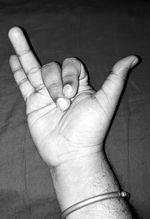Dharma śāstra-Ānhika-prāṇāyāma
Sometimes transliterated as: Prāṇāyāma, Pranayama, praanaayaama, prANAyAma
Prāṇāyāma is a breathing technique which has great significance in the Sanātana tradition. Now a days, Prāṇāyāma is more popular as a breathing exercise to maintain health. It is propagated as a useful technique to deal stress-based disorders. It also has a significant role in attaining all the four principal puruṣārthas.[1] It is one of the eight limbs of yoga stated by patanjali in the aphorism - "Yama-niyama-āsana-prāṇāyāma-pratyāhāra-dhāraṇā-dhyāna-samādhayoṣṭāvangāni"[2].
Etymology[edit]
Prāṇāyāma is a compound word formed from the words 'prāṇa' and 'āyāma'. The word 'prāṇa' is formed from the verbal root 'ana-prāṇaṇe' with the prefix 'pra'. Prāṇa means cause of life. The word āyāma is formed from the verbal root 'yama-uparame' with the prefix 'ājñ (आङ्)'. Āyāma means prevention. There are two possible meanings for the word Prāṇāyāma delineated as follows:
What is Prāṇa?[edit]
In order to get a clear picture about prāṇāyāma, it is essential to know what is prāṇa. Broad meaning of the word prāṇa would be vāyu[5] Even the śruti - Yaḥ prāṇaḥ sa vāyuḥ[6] supports the view 'prāṇa means vāyu'. This view contradicts the viewpoint of sānkhyas in this regard. They opine that prāṇa is the function of all sensual organs - Sāmānyā karaṇa vṛttiḥ prānādyā vāyavaḥ pancha[7]. This contradiction had been clarified by śri śankara bhagavatpāda, in his bhāṣya[8] to the brahma sutrās. In the commentary of the sutra - "Na vāyukriye pṛthagupadeśat[9]", he states that 'prāṇa is neither mere vāyu nor something completely different from vāyu. Prāṇa is the vāyu that is present inside the body[10]. Prāṇa is further classified into 5 types as follows:
- Prāṇa
- Apāna
- Vyāna
- Udāna
- Samāna
This division is based on the location of vāyu in the different body parts.
Āyāma[edit]
Maharṣi Patanjali defines prāṇayāma through his aphorism:
Hindering the natural flow of inhalation and exhalation of vāyu is prāṇāyāma. Normally one inhales and exhales air in natural process. Regulation of this inhalation and exhalation of air is believed to be prāṇayāma. Inhalation of air is called pūrakaṃ, holding breath is called kuṃbhakam and exhalation is called rechakaṃ. The difference between the duration and techniques of pūraka-kuṃbhaka-rechakās differentiates prāṇāyāmas from one another.
Prāṇāyāma Mudrā[edit]
Prāṇāyāma is normally performed by closing one nostril and keeping the another open for pūrakaṃ and rechakaṃ. There is particular way to close the nostrils through a mudrā (intertwinings of fingers) which is specially prescribed for prāṇayāma -
aṃguṣṭhānāmikābhyāṃ tu tathaiva kaniṣṭhayā| prāṇāyāmastu kartavyo madhyamāṃ tarjanīṃ vinā||[12]
Prāṇāyāma Mudrā is to be done by right hand. One should use thumb to close right nostril and ring finger or little finger to close left nostril. Never should one touch the nose with index and middle finger. This mudrā is held in the position shown in the picture.
Types of Prāṇayāma[edit]
Prāṇayāma is mainly two types -
- Agarbha
- Sagarbha
Agarbha Prāṇāyāma[edit]
Api dhyānaṃ vinā garbhaḥ[13]
Prāṇayāma which does not have dhyānaṃ as a part during pūrka-kuṃbhaka and rechaka is called 'agarbha prāṇāyāma'. People who practice prāṇayāma as an exercise perform this type.
Sagarbha Prāṇāyāma[edit]
Sagarbhastatsamanvitaḥ[14]
Prāṇayāma which is done along with dhyānaṃ or japam in the stage of kuṃbhakaṃ or pūrka-kuṃbhaka and rechaka is called sagarbha prāṇāyāma. Again sagarbha prāṇayāma is of two types:
- Japagarbha prāṇayāma
- Dhyānagarbha prāṇayāma
Japagarbha Prāṇāyāma[edit]
According to yogayājnavalkya, Japagarbha Prāṇāyāma is described this way:
Bhūrbhuvasvarmaharjanstapaḥ satyamathaiva ca| pratyoṃkārasamāyuktaṃ tathā tatsavituḥparaṃ||
Omāpojyotirityetacchiraḥ paścāt prayojayet| omāpojyotirityeṣamantro vai taittirīyakaḥ||
trirāvartanayogāttu prāṇāyāmastu śabditaḥ||[15]
After performing pūrakaṃ for at least 12 seconds, in the sate of kuṃbhakaṃ, one should repeat the following mantra for three times:
Om bhūḥ om bhuvaḥ om suvaḥ om mahaḥ oṃ janaḥ om tapaḥ oṃ satyaṃ oṃ tatsaviturvareṇyaṃ bhargo devasya dhīmahi dhiyoyonaḥ prachodayāt||[16]
People belonging to old age and tender age, who cannot hold breath for such a long period should repeat Om bhūḥ om bhuvaḥ om suvaḥ om mahaḥ oṃ janaḥ om tapaḥ oṃ satyaṃ at the stage of kuṃbhakaṃ. After performing kuṃbhakaṃ in the said way then one should perform rechakam. This kind of Japagarbha Prāṇāyāma is an essential part of ritual as prescribed by śruti and smṛti.
Dhyānagarbha Prāṇayāma[edit]
When in the stages of pūrakaṃ, kuṃbhakaṃ and rechakaṃ, meditation on a deity is done, that type of prāṇāyāma is called as Dhyānagarbha Prāṇayāma. Like:
nābhimadhye sthitaṃ dhyāyetkaṃ raktaṃ pūrakena tu| nīlotpalābhaṃ hṛtpadme kumbhakena janārdanaṃ|| lalāṭasthaṃ śivaṃ śvetaṃ recakenābhicintayet||[17]
While performing pūrakaṃ one should meditate on the navel area concentrating on the red colored-four-faced brahmā. During kuṃbhakaṃ one should meditate on black colored-viṣṇu at the chest area. While performing rechakam one should meditate on white colored-śivaat forehead region. This is one kind of Dhyānagarbha Prāṇayāma. There are various kinds of Dhyānagarbha Prāṇayāmas prescribed in various smṛtis.
References[edit]
- ↑ These puruṣārthas are dharma, artha, kāma and moksha.
- ↑ pātanjalayogasūtraṃ - 2-29
- ↑ prāṇasya āyāmaḥ
- ↑ prāṇaḥ āyamyate anena
- ↑ It means air.
- ↑ Bruhadaranyakopanishad - 1-5-3
- ↑ sankhyakaarika - 29
- ↑ It means commentary.
- ↑ brahma sutra 2-4-9
- ↑ vā yureva adhyātmaṃ āpanna pancha vyūhaḥ viśeṣātmanā avatiṣṭhamānaḥ praṇo nāma bhaṇyate, na tattvantaraṃ nāpi vāyumatraṃ
- ↑ pātanjalayogasūtraṃ 2-49
- ↑ karmapradīpa, smṛti muktāphalaṃ, p.no.323
- ↑ nārada smṛti, smṛti muktāphalaṃ, p.no.324
- ↑ nārada smṛti, smṛti muktāphalaṃ, p.no.324
- ↑ yogayajnavalkya, smṛti muktāphalam, p.no.323
- ↑ This mantra is to be initiated in the right manner from a guru. Utterance of this mantra is restricted to males belonging to brāhmaṇa, kṣhatriya and vaiśya varṇas
- ↑ Vyāsasmṛti, smṛti muktāphalṃ, p.no.324

